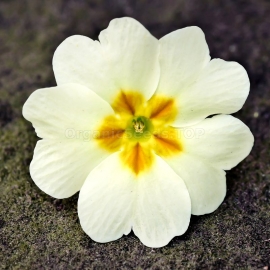


«Alba» - Organic Primula Seeds
1.39 €
Who would have thought that these early blooming gems could be easily grown from Fairy Primrose seeds! They are one of the favorite early-blooming flowers that grow in frost-free zones as perennials and colder zones as annuals.
-
Organic Primula «Alba»
Who would have thought that these early blooming gems could be easily grown from Fairy Primrose seeds! They are one of the favorite early-blooming flowers that grow in frost-free zones as perennials and colder zones as annuals.
This Fairy Primula is native to China where it inhabits moist areas at the edges of fields and forests. It was not introduced to the west until the end of the 19th century.
This sweet little Fairy Primrose grows 8 to 10 inches tall and forms neat clumps of flat, soft, downy leaves with undulating edges. The flowers are what make it a delight to the flower garden. Each rosette sends up a straight leafless stem with up to three tiered whorls of small blossoms with lobed petal tips. Each whorl can have up to a dozen flowers, which may be retained for weeks.
This delicate perennial prefers partial sun and moist, humus-rich soil. It is intolerant of summer heat or cold winters and goes dormant when temperatures become too extreme. Fairy Primrose Primula Malacoides is a beautiful perennial that looks best planted in masses or large sweeps. Many people use Fairy Primrose plants in containers or in flower beds. It also makes a great house plant, offering flowers from December to March if the spent blooms are clipped to help prolong the bloom time.
Sow Fairy Primrose seeds in starter trays using a "peaty" potting mix. These flower seeds need light for germination, so barely cover Fairy Primrose flower seeds with peat moss. For December and January blooms, sow Primula Malacoides seeds in June and July. Keep seeds moist until germination and after as well. Fairy Primroses do not like to dry out. In warm conditions, mist spray daily and stand the pot on moist pebbles. Begin to feed when the flower stalks begin to develop and continue to feed at intervals of 14 days until flowering has finished.
